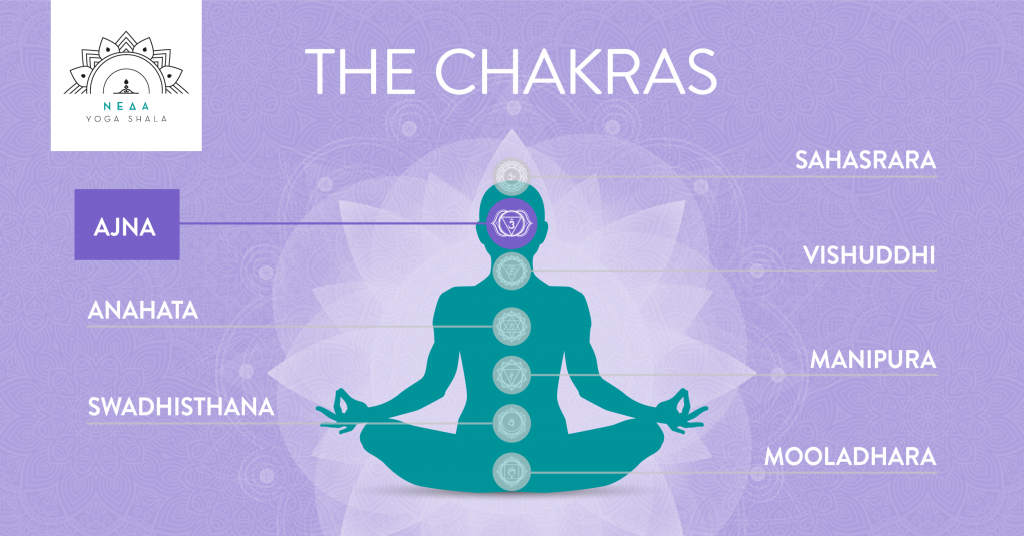
Ajna Chakra
The sixth center is called Ajna chakra.
It is placed inside the head at the level of the center of the eyebrows. It is depicted as a lotus with two petals, which symbolise the two Nadis, Ida and Pingala, among others, or the sympathetic and parasympathetic nervous system. It is connected to the sounds of Ham and Ksham.
The Ajna controls and activates the pituitary gland, the endocrine glands and the brain, to some degree. It directs and controls the rest of the centres and the corresponding glands and vital organs. It is associated with all the senses, and especially with the eyes, but also with the ears, the nose and the sinuses, the cerebellum and the central nervous system. At this point, it must be mentioned that the pituitary gland corresponds to the Αjna, just like the pineal gland corresponds to the Sahasrara. Together, the pineal and the pituitary glands control the endocrine system.
It is associated with functions of the mind, and the ability to remember, concentrate and process. It is associated with higher knowledge, intellect, intuition and a clear picture of the world, without emotional filters, expectations and judgment. Τhe complete knowledge that already exists in pure and unmanifested form, in the same way that a seed already contains all the information that will be manifested in the plant. The Ajna is expressed through a focused mind and meditation.
It is through the sixth centre that the conscious awareness of existence is conquered. During visualization or dreaming, this internal look starts from this center. It is the space through which we cultivate awareness. While our eyes gaze the external world, Αjna is the place through which we look inside. It is responsible for the understanding of abstract notions and principles. It carries a role of guidance. It operates as a radar, and as such, what it receives depends on the direction of focus.
It is said that our energy may be located in Mooladhara, but we can become aware of it only through Ajna. When we eat, sleep or talk without awareness, Ajna is not activated. But when we speak and a part of our awareness knows that we speak, then this knowledge is a trait of the Ajna center.
The Ajna Chakra is the centre of superior psychic ability and is connected to all meditation poses, such as Padmasana, Ardha padmasana, Siddhasana, Siddha Yoni Asana, Sukhasana, to the recitation of mantra Om and to the Trataka technique, as it is the first in a series of practices which require, and thus develop, the focus of the mind. The pranayama practice that is connected to the Ajna is Anuloma Viloma.